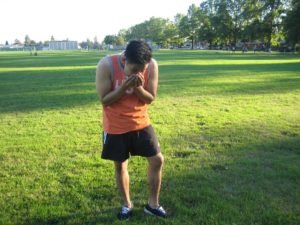A cold sore is a small-sized, painful blister that forms on or around the lips or within the mouth or nose. The sores generally manifest if an individual is sick or stressed.
The cold sores can be brought about by the herpes simplex virus. Take note that the fluid within the blisters contain the live virus. The virus can readily spread from one individual to another by:
- Sharing of food, beverages or utensils
- Kissing
- Unable to wash hands after touching the sores
Once infected, the virus is present within the body even after the sores have settled. The virus can trigger cold sores at any time, usually during or after:

- Skin injuries such as burns or scrapes
- Emotional stress
- Prolonged exposure to the sun
- Dental treatment
- Physical ailments such as the flu or common cold
- Tiredness
- Hormonal changes due to pregnancy or the menstrual cycle.
What are the signs?
Around 24 hours before the manifestation of the blisters, the individual might feel tingling, numbness, burning or itchiness around the lips, mouth or nose.
A small cluster of miniature blisters forms on or around the lips or within the mouth or nose. The blisters can be quite painful. After a few days, the blisters rupture and fluid seeps out. Remember that this fluid is highly contagious. Once they dry, they turn into sores with yellowish crusts that are less painful.
Management of a cold sore
An over-the-counter antiviral medication such as docosanal can reduce the symptoms. It might also help promote rapid healing of the sores. The medication is applied on the site with blisters.
An oral antiviral medication might be prescribed by the doctor. The drug will not get rid of the virus but can reduce the time span of the symptoms and allow drying up of the blisters rapidly. Using the drugs upon the onset of the symptoms can prevent blisters.
The blisters typically last 7-10 days. Remember that they are contagious if there is drainage from the blisters.
